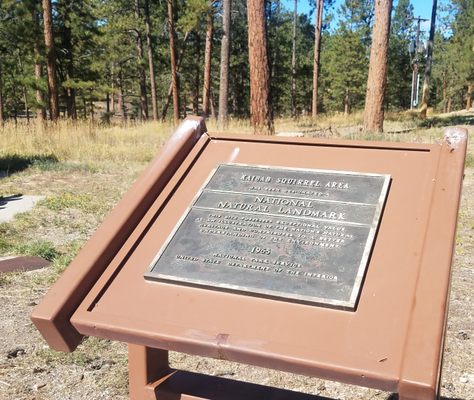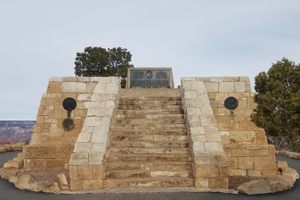About
If you're hiking through the forests of the Kaibab Plateau and hear a rustling in the trees or leaves, pause and look around. If you're lucky, you may be in for a rare treat.
The Kaibab Plateau, an elevated region within the much larger Colorado Plateau, is a remote and largely undeveloped region of Northern Arizona flanked by the Grand Canyon on one side and lower elevation deserts on the others. Unlike the surrounding area, which is much more arid, the Kaibab Plateau is home to dense conifer forests and groves of aspen trees, which thrive in the cooler, windier, and wetter elevated region.
One result of the plateau's ecological isolation was the evolution of a unique squirrel. Related to the much more common Abert's squirrel, which calls much of the the mountainous regions of western United States and Mexico home, the Kaibab squirrel became separated from its genetic cousins at some point in history atop the Kaibab Plateau.
Only able to survive in ponderosa pine forests, the squirrels on the Kaibab Plateau are removed from their brethren by canyons and deserts and are now a genetically unique subspecies, confined to an area of only about 638 square miles. They're noted for their distinctive charcoal-colored bodies and strikingly white tails.
Unlike squirrels living in many other more developed areas, the Kaibab squirrel doesn't interact with humans frequently, and largely still avoid crossing paths with any people they notice. So although the Kaibab squirrels are not facing an immediate threat of habitat loss or extinction, they're elusive, making spotting a Kaibab squirrel a semi-rare event.
Still, despite their tendency to keep to themselves, the Kaibab squirrels have become locally beloved and iconic, gracing the imagery of logos, stickers, coffee mugs, and more on the Kaibab Plateau. In 1965, the Kaibab squirrels and their isolated habitat were recognized for their uniqueness and placed on the National Natural Landmarks Register.
Related Tags
Know Before You Go
Although uncommon, the squirrels can be found in the ponderosa pine forests between Jacob Lake, Arizona, and the North Rim of Grand Canyon National Park.
Community Contributors
Added By
Published
October 3, 2019


































